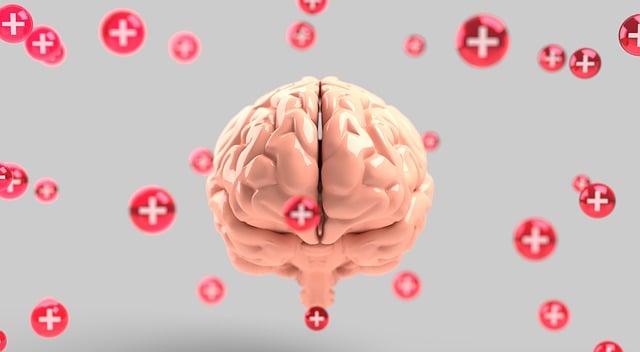Crisis intervention for adolescent teens in polyamorous or open relationships requires a specialized, holistic approach addressing unique emotional challenges. This includes structured frameworks beyond traditional methods, focusing on open communication, positive thinking, and tailored stress management techniques. Therapy sessions adapt to discuss resilient relationship-building, consent, and managing stressors related to exploring diverse love interests. Interactive workshops empower teens with effective communication strategies. Mental health professionals play a vital role in creating culturally sensitive practices, risk management planning, and developing strategies to mitigate potential risks, fostering trust and understanding through open dialogue. This comprehensive approach ensures adolescents receive the guidance necessary to navigate complex interpersonal dynamics and flourish in their personal journeys.
Crisis intervention strategies are vital in guiding adolescent teens navigating complex polyamorous and open relationships. This article offers a comprehensive framework for professionals supporting young individuals through crisis. We explore therapeutic approaches tailored for this demographic, emphasizing the importance of open communication to build trust. Additionally, we delve into unique challenges, such as family dynamics and peer pressure, and provide resources for long-term wellbeing. By understanding these strategies, mental health practitioners can effectively assist teens in crisis.
- Understanding Crisis Intervention: A Framework for Support
- Therapeutic Approaches for Adolescent Teens in Polyamorous Relationships
- Open Communication: Strategies for Building Trust and Connection
- Addressing Unique Challenges: Navigating Family Dynamics and Peer Pressure
- Resources and Referrals: Guiding Teens Towards Long-Term Wellbeing
Understanding Crisis Intervention: A Framework for Support

Understanding Crisis intervention involves recognizing that it’s a structured framework designed to provide immediate support during periods of intense emotional distress or traumatic events. For adolescents and teens, especially those navigating complex identities like polyamorous and open relationships, crisis can manifest differently than in monogamous youths. A nuanced approach is necessary to address their unique challenges effectively. This includes fostering open communication, encouraging positive thinking, and teaching practical stress management techniques.
The framework should equip individuals with healthy coping mechanisms tailored to their personal circumstances. For instance, therapy sessions could be adapted to include discussions on building resilient relationships, understanding consent within polyamorous dynamics, and managing the unique stressors that come with exploring diverse love interests at a young age. Moreover, incorporating interactive workshops focused on communication strategies can help these teens express their needs and boundaries in a constructive manner.
Therapeutic Approaches for Adolescent Teens in Polyamorous Relationships

Therapeutic approaches tailored for adolescent teens in polyamorous and open relationships are gaining recognition as a crucial aspect of mental healthcare. These relationships, which differ from the traditional monogamous norm, often present unique challenges that require specialized guidance. Therapy can serve as a safe space for these teens to explore their identities, navigate complex dynamics within their relationships, and manage potential stressors related to family, peers, and societal perceptions.
Mental health professionals play a pivotal role in fostering cultural sensitivity within their practice, especially when engaging with adolescents from diverse relationship backgrounds. Incorporating elements of risk management planning is essential for addressing the specific needs of this demographic. By conducting thorough risk assessments, professionals can identify potential risks associated with polyamorous relationships and develop strategies to mitigate them. This holistic approach ensures that therapy remains effective and responsive to the evolving needs of adolescent teens navigating their unique interpersonal landscapes.
Open Communication: Strategies for Building Trust and Connection

Open communication is a cornerstone of crisis intervention, especially when working with adolescents navigating complex relationships like polyamorous and open dynamics. Building a safe and non-judgmental space encourages teens to share their experiences, emotions, and fears freely. This process fosters trust and strengthens the therapeutic alliance, enabling mental health professionals to gain valuable insights into the individual’s world.
In these unique relationship structures, where boundaries are often fluid and consensual, it’s crucial to address any stigma associated with mental illness. By creating an environment of acceptance and understanding, therapy for adolescent teens in polyamorous or open relationships can facilitate honest discussions about emotional challenges. Encouraging journaling exercises focused on mental wellness can be a powerful tool for self-reflection, allowing individuals to process their experiences and identify coping strategies while reducing the stigma through self-expression and exploration.
Addressing Unique Challenges: Navigating Family Dynamics and Peer Pressure

Addressing unique challenges within families and peer groups is a critical component of crisis intervention for adolescent teens, especially those in polyamorous or open relationships. These dynamics can significantly impact an individual’s mental health and decision-making processes. Many teenagers seek support when they feel their family structures differ from societal norms or when they experience pressure to conform to traditional relationship models.
Therapy for adolescent teens exploring alternative relationship styles, such as polyamory, requires a nuanced approach. Mental health professionals must be culturally competent, understanding the diverse needs of this demographic and their families. This involves educating both adolescents and healthcare providers on the benefits and potential challenges of these relationships, fostering an environment where individuals feel supported to make informed choices while managing any associated risks. Incorporating self-care routine development as part of risk management planning for mental health professionals can enhance the overall care provided to this unique population.
Resources and Referrals: Guiding Teens Towards Long-Term Wellbeing

When crisis intervention strategies are tailored for teenaged individuals navigating complex personal relationships, such as those in polyamorous or open relationships, a comprehensive approach is essential. Resources and referrals play a pivotal role in guiding teens towards long-term wellbeing. Mental health professionals can equip adolescents with tools to enhance their resilience, promote healthy communication, and foster positive identity formation. This may include therapy sessions that delve into individual and group settings, facilitating open discussions on intimate relationships, consent, boundaries, and conflict resolution techniques.
By integrating these strategies within a supportive environment, teens gain invaluable insights and skills for managing challenges unique to their experiences. Encouraging self-reflection and promoting understanding of one’s emotional needs are key components of this process. Moreover, providing information about specialized therapy options catering specifically to adolescent teens in polyamorous or open relationships empowers them to seek professional support tailored to their circumstances. This, in turn, contributes to a more comprehensive Mental Health Policy Analysis and Advocacy, ensuring that these individuals receive the necessary guidance for thriving in their personal journeys.
Crisis intervention strategies, particularly tailored for adolescent teens in polyamorous and open relationships, are vital tools for fostering their emotional resilience. By combining therapeutic approaches, open communication techniques, and a deep understanding of family dynamics, professionals can effectively support these young individuals through challenging times. This comprehensive guidance ensures that adolescents receive the necessary resources and referrals to navigate unique challenges and cultivate long-term wellbeing.












